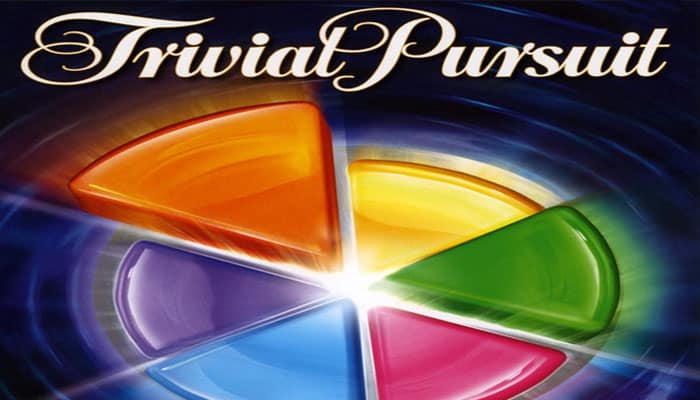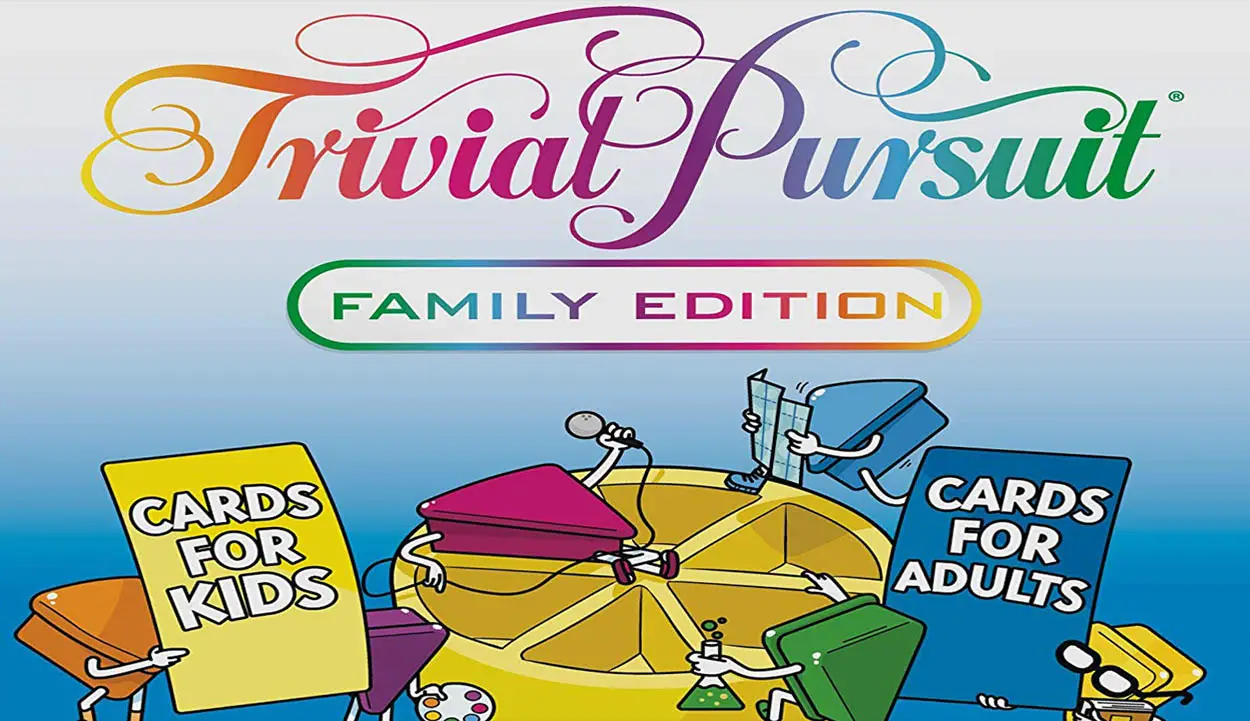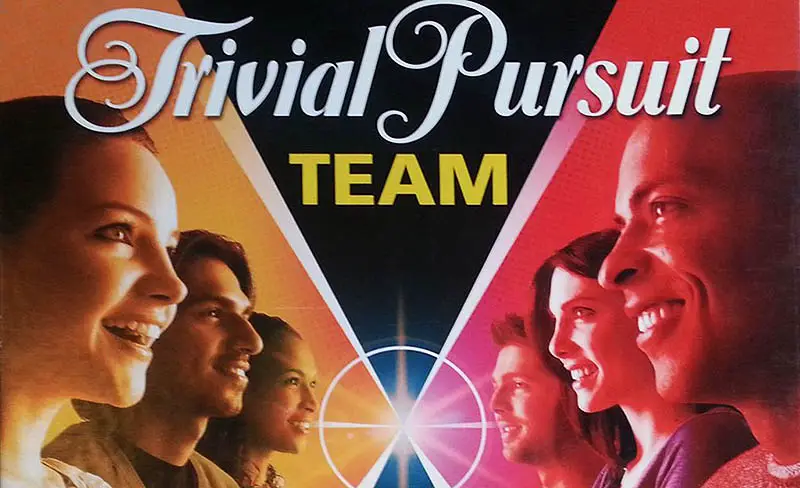Created by: (Uncredited), Scott Abbot, Chris Haney, (Uncredited)
Published by: Diset S. A., Eskifell hf., Hasbro
Alternate Names: Quelques Arpents de Pièges, Remue Méninges, Sabelotodo, Trivial Pursuit: Edition Genus, Trivial Pursuit: Edizione Genus
Description:
Trivial Pursuit is the original trivia game that started it all.
Each player has a circular playing piece with six pie-shaped holes. The goal of the game is to collect a pie in each color. The colors correspond to different question categories.
The board consists of a circular track with spaces in seven different colors. Six of the colors correspond to question categories while the last color gives a new dice roll. Six spaces along the track are "pie spaces", and from these there are "spokes" of track leading to the middle of the board.
Players roll a die and move along the track in any direction they like. When a player stops on a color they get a question of the appropriate category.
If the player answers a question correctly while on a pie space, they get a pie of that color (assuming they don't already have it). A correct answer on another square allows the player to roll again.
Once the player has one pie in each color, she can move along the spokes to the middle of the board to win the game.
Prices:
| Retail Price: | $50 |
| Amazon: | $48 |
| Ebay: | $40 |
Expansions:
1650 more Questions & Answers for use with Trivial Pursuit: Set I, Group I
1650 more Questions & Answers for use with Trivial Pursuit: Set I, Group II
1650 more Questions & Answers for use with Trivial Pursuit: Set I, Group III
1650 more Questions & Answers for use with Trivial Pursuit: Set I, Group IV
Forte Trivia Cards Volume II
Forte Trivia Cards, Volume One
Love, Sex and Romance Trivia Card Set
Medical Trivia
Trivial Pursuit Mini Pack: Flicks
Trivial Pursuit Mini Pack: Rock & Pop
Trivial Pursuit Mini Pack: Sports
Trivial Pursuit Mini Pack: The Good Life
Trivial Pursuit Mini Pack: War & Victory
Trivial Pursuit Mini Pack: Wild Card
Trivial Pursuit Questions: 1200 Brand New Questions and Answers
Trivial Pursuit Questions: Music Edition
Trivial Pursuit: 007 Edition
Trivial Pursuit: 1997 Edition
Trivial Pursuit: All Star Sports Edition
Trivial Pursuit: Baby Boomer Edition
Trivial Pursuit: Bayern Edition
Trivial Pursuit: Biographies Edition
Trivial Pursuit: Country Music
Trivial Pursuit: Danmarksudgave
Trivial Pursuit: Disney Edition Kartensatz
Trivial Pursuit: Edición Jóvenes Carrozas
Trivial Pursuit: Édition Cinéma
Trivial Pursuit: Édition des stars
Trivial Pursuit: Edition Europe
Trivial Pursuit: Edition France
Trivial Pursuit: Edition XXème siècle
Trivial Pursuit: Entertainment Edition
Trivial Pursuit: Essen & Trinken
Trivial Pursuit: Family Edition – Card Set
Trivial Pursuit: Genus II
Trivial Pursuit: Genus Kartensatz – 2400 Fragen und Antworten
Trivial Pursuit: Hitradio Ö3
Trivial Pursuit: Holland Editie
Trivial Pursuit: Junior II
Trivial Pursuit: Kansallispainos
Trivial Pursuit: Kronen Zeitung 1900 – 2000
Trivial Pursuit: Rijnlands Lyceum
Trivial Pursuit: RPM Edition
Trivial Pursuit: Silver Screen Edition
Trivial Pursuit: Sports Edition
Trivial Pursuit: Sverige-Upplagan
Trivial Pursuit: The Vintage Years Edition (1920's – 1950's) – Card Set
Trivial Pursuit: TV
Trivial Pursuit: Welcome to America Edition
Trivial Pursuit: World Football – Bite-Size
Trivial Pursuit: Young Players Edition Card Set
USA Trivia Tour
More (48)
Awards:
Mensa Select Winner 1990
Årets Spel Best Family Game Winner 1985








